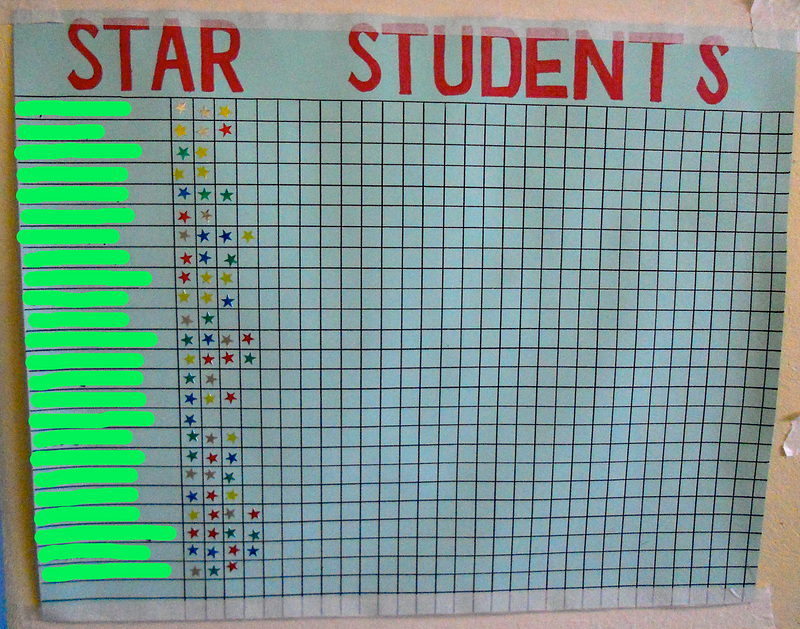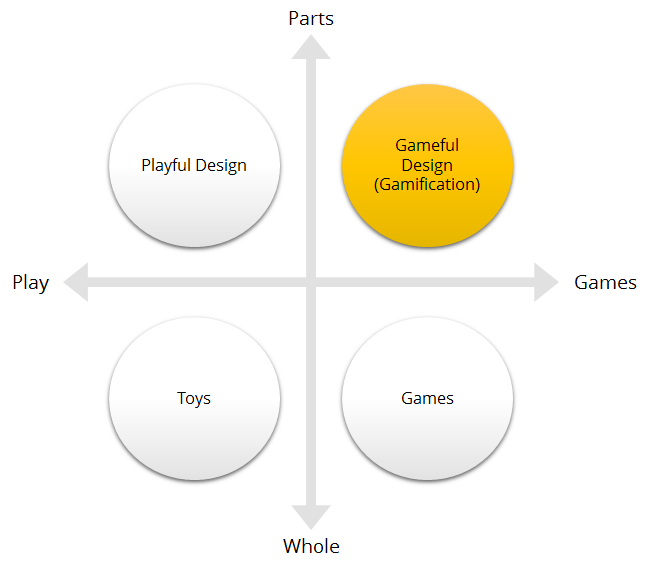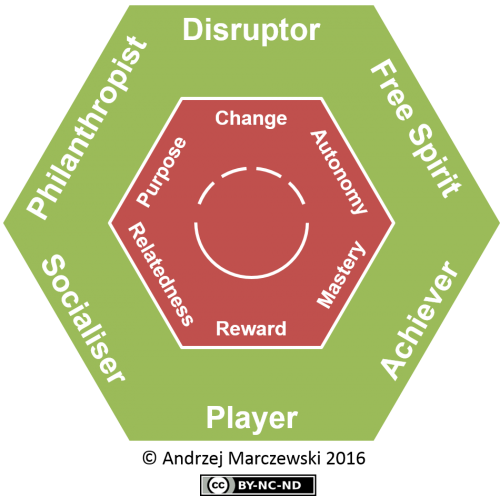Written by Melissa Stocco.
A big challenge teachers face is presenting course material in a way that peaks their students’ interest and engages them to participate. Gamification is a technique teachers can use to get students involved in classroom activities and encourage them to learn course material. Gamification does this by using “game design elements in non-game contexts” (Deterding et al., 2011). Gaming elements help motivate students by making lessons more fun and offering other incentives. For example, students answering questions in the classroom is not a gamified activity, but can be transformed into a gameful design by adding rewards or points for questions that are answered correctly. When I was in elementary school, one of my teachers had a “leaderboard” for the number of books we read that year. If you read a book in your free time, a star was added on beside your name. This gamified our independent reading by creating some healthy competition within the classroom. However, using extrinsic motivation for education is controversial, since students might lose interest once incentives like “stars” are removed. This means that extrinsic motivations are understood to be temporary and not able to sustain long term engagement (Kohn, 1999).

It is important to note that gamification does not turn activities into games. Gamification is not the same as educational games or what is defined as “serious games”. Serious games, like gamification, are developed for another purpose besides entertainment. For instance, serious games are often developed in areas such as education, healthcare, and for training in the workplace. The main difference between gamification and serious games is whether or not the game is considered to be complete. In this diagram, we can see that gamification encompasses parts of a game, whereas serious games are the whole or entirety of the game (Deterding et al., 2011).

Gamification is often used to increase individuals’ motivation to engage with classroom activities. Gamification can motivate individual participation both intrinsically and extrinsically.
- Intrinsic motivation occurs when an individual participates simply because they are enjoying the activity. Intrinsic motivation is voluntary and is not dependent on external rewards.
- Extrinsic motivation involves some alternate or external goal individuals are trying to reach. For instance, an individual is extrinsically motivated to complete a task when they want to receive a reward or prize.
Both extrinsic and intrinsic motivations are important for developing effective gamified activities and applications. Extrinsic motivations are good for getting students interested in a new concept or topic, whereas intrinsic motivation is better for long-term engagement. Gamification can transform an activity from something that is not-so-fun into something that individuals voluntarily want to be a part of. The application of gamification in education and the classroom is invaluable since it can spark curiosity and foster autonomous learning.
Gameful Design Elements for Education
There are a number of elements that could be implemented into educational teachings or a classroom setting. Andrzej Marczewski developed a number of gamification elements based on his research on HEXAD user player types. HEXAD is a gamification model that describes six distinct player styles based on an individual’s intrinsic and extrinsic motivations. The six player types and their corresponding motivations are shown in the diagram below.

I have selected 15 of Marczewski’s gaming elements that would be useful in the field of education or in the classroom. Further, I have given a description of each element and listed the user types that respond the best to these elements of gameful design.
- Curiosity/ Mystery
Player type: All types
Curiosity can encourage students’ engagement with learning by fostering students’ sense of wonder. Curiosity will drive students to want to know the answer to a question, solve a mystery, or find out how to do something. This element can help drive students’ intrinsic motivations by sparking their curiosity to learn something new. When students are curious they are genuinely interested in furthering their education.
2. Progress/ Feedback
Player type: All types
Tracking progress can show students how far they have come since the start of school or what they have learned from the beginning of a new unit. Teachers can keep track of student accomplishments, so students can see the progress they have made. This gives students something feel proud of and can visually show students the knowledge they are developing. Feedback from the accomplishments students’ experiences helps them continue to move forward even when they struggle to reach their objectives.
3. Time Pressure
Player type: All types
Time pressure can help make an activity more fun by giving students a timed objective. This can aid students to focus on the activity at hand and make sure they get the project done in the time period allotted. If students are given unlimited time to work on a project, they are likely to take all the time they need to finish it.
4. Competition
Player type: Socializer
Competition can make activities more fun and social. Students are motivated to complete tasks before or better than their peers. This element can be used to make a task more enjoyable, but could alienate some students who are not as competent. Therefore, competition should not be used all of the time, or should be balanced to put students on an equal playing field. For example, team-based competition can balance out students’ skill levels.
5. Guilds / Teams
Player type: Socializer
Teams-based competition can help with balancing skill levels, collaboration, and building teamwork skills. Teams can encourage students to help each other learn, rather than independently competing against their classmates. To encourage collaboration within teams, students can be assigned specialized roles to make each member integral to reaching their objectives.
6. Exploration
Player type: Free Spirit
Exploration is a good way to motivate students with free spirits. This element allows students to explore a certain topic or subject matter. Exploration could be added into the classroom through scavenger hunts or class field trips. This element gives students some freedom to engage their own curiosity.
7. Customization
Player type: Free Spirit
This element gives students some freedom to make customizations to their projects or assignments. Customization allows students to have some originality and personalize their projects and experiences.
8. Challenges
Player type: Achiever
Challenges motivate students to apply their knowledge by encouraging students to complete objectives even when they experience difficulty meeting their goals. Challenges should not be too difficult or too easy to achieve. If challenges are too difficult students are likely to feel defeated, but if they are too easy they will get bored with their assigned task..
9. Quests
Player type: Achiever
Quests develop a series of challenges that students need to complete. This can help students reach larger objectives by breaking down tasks into smaller chunks. Each challenge in a quest will build onto the next and bring students closer to reaching a final goal.
10. Collect & Trade
Player type: Philanthropist
Collecting and trading objects can be integrated with classroom activities to make them more entertaining. For instance, to learn about geography students could be asked to collect and trade cities that belong to their assigned country. This element could be applied many different ways to get students to work towards learning objectives.
11. Sharing Knowledge
Player type: Philanthropist
Sharing knowledge gives students an outlet to share what they know, and helps students learn from one another. Philanthropists enjoy and are motivated by helping others. These students should be given a chance to answer their peers questions in the classroom.
12. Innovative Platform
Player type: Disruptor
Mix things up by allowing students to innovate and think outside the box. This will give students a chance to challenge current designs and build new ideas. An innovative platform allows students with a disruptive user type to take control over their assignments and develop new ways of doing things.
13. Voting / Voice
Player type: Disruptor
Voting on what to do in the classroom gives students a sense of choice in decisions or changes being made. Students could vote on what book the class will read or the topic for a class essay. This element will help engage disruptors who like influencing changes in the classroom.
14. Leaderboards/ Ladders
Player type: Player
Leaderboards visually display students’ progress on a particular activity. This can help motivate students to perform better in the classroom. Leaderboards could be used for student behaviour, independent reading, attendance, or homework submissions.
15. Physical rewards / Prizes
Player type: Player
Rewards extrinsically motivate students to participate in the classroom. Rewards can encourage students to get involved in an activity, but should not always be relied on to motivate students to learn. Extrinsic rewards can discourage voluntary learning or intrinsic learning if they are overused. This means if students expect to receive a reward each time they participate, they will not want to learn without these extrinsic incentives.

